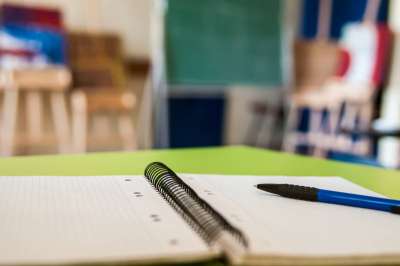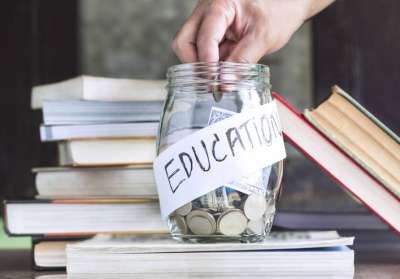Before the Trip
The first element of a successful field trip occurs before you go anywhere—deciding on the purpose for the field trip:
Expert Opinion
It's important to discuss with students the reasons for a specific field trip, what they can expect to discover, and any potential highlights.
Let students know how the planned trip relates to information discussed in class or their personal lives.
Invite students to review websites specific to the area they will visit.
Encourage students to read brochures and flyers about the area.
Ask students to generate questions they would like to explore at the site.
Invite students to put together a potential schedule of activities for the day.
After choosing a site to visit, research the spot; if possible, visit the site in advance. Talk with locals about the best days and times to go. Try to obtain a map (or create your own) of the site to locate restrooms, water fountains, eating facilities, potential hazards, and a first-aid area (if available).
Depending on how far away you are from the site and the age of your students, decide how long to stay and where to have lunch. For elementary grades, I recommend staying for half a day and eating lunch back at the school. Older students can stay longer and have lunch on-site.
In class, begin preparing for the field trip by talking with students about the reasons for the trip, what they can expect to discover, and any highlights. Let students know how the planned trip correlates with information or concepts discussed in class.
Provide students with resources and information, including related literature and websites, about the site in advance of the field trip. This information can provide students with necessary background information to fully understand and appreciate what they will see and do on their field trip.
Check on medications. Which students will need to bring along any pills, ointments, or medications? Also, be aware of any potential allergies (food items, bee stings, contaminants) students may have. Also, plan how you will accommodate students with specific disabilities (physical, visual, tactile, auditory, or learning) at the site?
With the site selected and researched, begin recruiting parent volunteers and gathering equipment, including a portable first-aid kit, sun block, bug spray, and other appropriate items. Send a letter home to parents and invite them to complete any required permission slips. Also, be sure to provide parents with a required “equipment list” for students.
You can enhance any field trip by inviting students to prepare a guidebook beforehand. This guidebook should not only detail relevant information about the site but also allow students to record impressions gathered during the trip. Individual students or small groups can develop the guidebook well in advance of the field trip. Consider including the following items in a guidebook:
Fire Alarm
Meet with parent volunteers in advance to go over procedures for the day. Communicate the important role they have in the success of the field trip. Make it clear that they are there to monitor and supervise children, keep them safe, and ensure that the group stays together at all times.
Photocopies of brochures or other printed materials available from the field trip site (write in advance for these).
A brief written or pictorial description of the site and the reasons for visiting that place.
Student-generated questions about the site and what they might see (have students provide space under the questions for responses).
A list of safety rules and expected form of behavior during the trip.
Articles about current events at the site.
Blank pages for students to record observations and illustrations of significant details or observations.
A summary page for students to write a brief wrap-up of the trip.
Space for photographs and/or illustrations.
A guidebook becomes a valuable record that both the teacher and students can refer to and utilize in subsequent lessons.
Field Trip Day!
On the day of the trip, remind students to bring their guidebooks and writing tools on the bus. Chaperones should meet at the school, where you will introduce them to their students. Once at the site, students should remain in their chaperone groups and always travel with their buddies.
Ask students some of the questions they generated before the trip. Provide opportunities for them to alter and expand their original questions now that they are at the study site. Be sure they understand the relevance of the site to the information they are studying in class.
Provide directed opportunities for students to record their impressions, thoughts, and questions in their guidebooks. Stop every so often to review what they have seen and allow students to make notations about new information. This data becomes invaluable later when summarizing the important points of the trip. For example, students will be able to compare their pretrip predictions with actual observations after the trip.
Before boarding the bus to return to school, plan a 10-minute summary session. Go over important points, and ask students to review any impressive information they have learned. You might want to pose questions such as, “What did you discover that you didn't know before?” “How are your observations similar to the information we learned in the textbook?” or “What was your most amazing discovery?” Encourage students to write summary statements as well as questions they would like to find the answers to in their guidebooks to review later in class.
After the Trip
Your field trip is not over when students return to school. Students need a “debriefing” session in which you discuss important points, clear up misconceptions, explore new questions, and draw relationships between the outside world and the classroom curriculum.
Provide students with an opportunity to share their perceptions of the trip and how specific features related to their background knowledge or to any textbook discussions. Encourage students to create models, dioramas, or some other artistic display of the information they learned during the trip.
Have students record their experiences on the class website. They may also wish to reinvestigate websites they examined prior to the trip to compare their actual discoveries with the data they obtained before the trip (How accurate was the information on that website?).
Review the purposes for the trip, and ask students to decide if those purposes were met. Ask students such questions as, “Did we learn anything new that we didn't know before the trip?” and “If we were to take the trip again, what do you think we should do differently?”
Secrets of Field Trip Success
A successful field trip is predicated on several interrelated factors. Consider the following in planning your trip:
Work with students to establish a shared purpose for the trip. Invite students to propose a relationship between classroom lessons and field trip experiences.
Have a back-up plan in the event of rain, bad weather, injury, etc.
Discuss any trepidations ahead of time. These may include fears related to heights, movements, certain animals, or closed spaces, among others.
Be sure to select a field trip site and a day/time when it is less crowded.
Only allow parents who are designated/trained chaperones to accompany you on your trip. One chaperone for every five students is an appropriate ratio.
Incorporate conservation messages—pack in and out all litter.
















